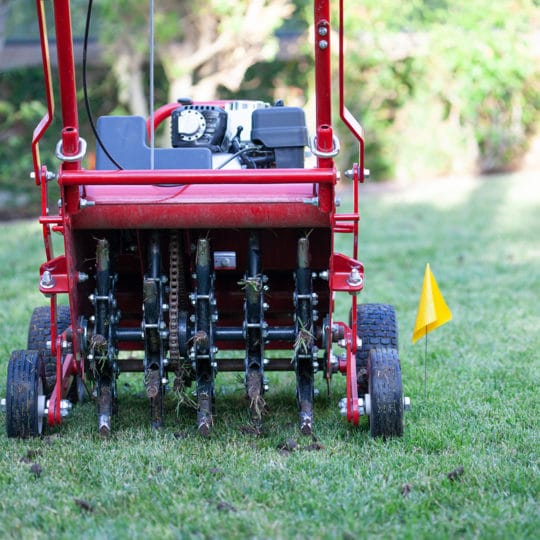Aerating Your Lawn in the Winter
Making the Plans Before Doing the Work
Posted
January 30, 2020

Lush green lawns don’t just happen overnight. It takes proper care and regular maintenance, even in the winter. While the middle of winter isn’t the best time to aerate—since the ground is hard and grass won’t recover quickly—it doesn’t mean you can’t mentally prepare yourself and physically prepare your lawn for what’s to come. Here are some tips on making a plan for aerating your lawn in the winter.
What is Aeration
Soil aeration is the process of perforating the soil across your lawn to help create a better flow of air, water, and nutrients down to the grass roots—thus, helping to strengthen your lawn. Aeration combats soil compaction and breaks up lawn thatch so that the grass can better grow and breathe.
How does soil become impacted? Great question.
- Lawn traffic. Kids, pets, and backyard BBQ guests trample all over your backyard, breaking down the grass and compacting the soil.
- Construction. Either new construction or renovation requires heavy trucks to plow through your yard. This either strips the topsoil off your lawn completely or severely compacts it.
- Reduced water retention. Whether the ground is hard in the winter or dry in the summer, some conditions make it harder for your soil to retain water. Aeration creates the pathway for this precious life source to make it to the roots.
Making Plans for Aerating Your Lawn in the Winter
The best time to aerate is when the grass is actively growing and the lawn can recover quickly from all the open divots. For cool-season grass, this is in early spring or fall, before the first frost. Aerate warm-season grasses in the late spring. Ideally, you want to aerate and fertilize before the first frost shocks your grass. This way, the fertilizer has a chance to make it down the deep aerated pathways to help protect the roots during the harsh winter season.
There are some things you can do during the winter to help prepare your lawn for aeration:
- Find the proper tools. There are spike and plug aerators that can be bought or rented. Take this time to learn about the differences and plan accordingly.
- Pick up any branches, leaves, or other debris. The fewer obstacles you have in your lawn, the easier the aeration process.
- Clear the lawn. During this time of year, there shouldn’t be anything in your lawn (like toys or furniture) that could kill your grass anyway.
Even if you’re not doing the actual work out in your lawn this winter, you can use this downtime to learn what needs to be done for your lawn to look its best come spring. Contact Cardinal Lawns for more information on aerating your lawn and making plans this winter.
Special Offer for New Customers
Two Free Lawn Care Treatments
Hurry! Offer Expires April 30, 2025